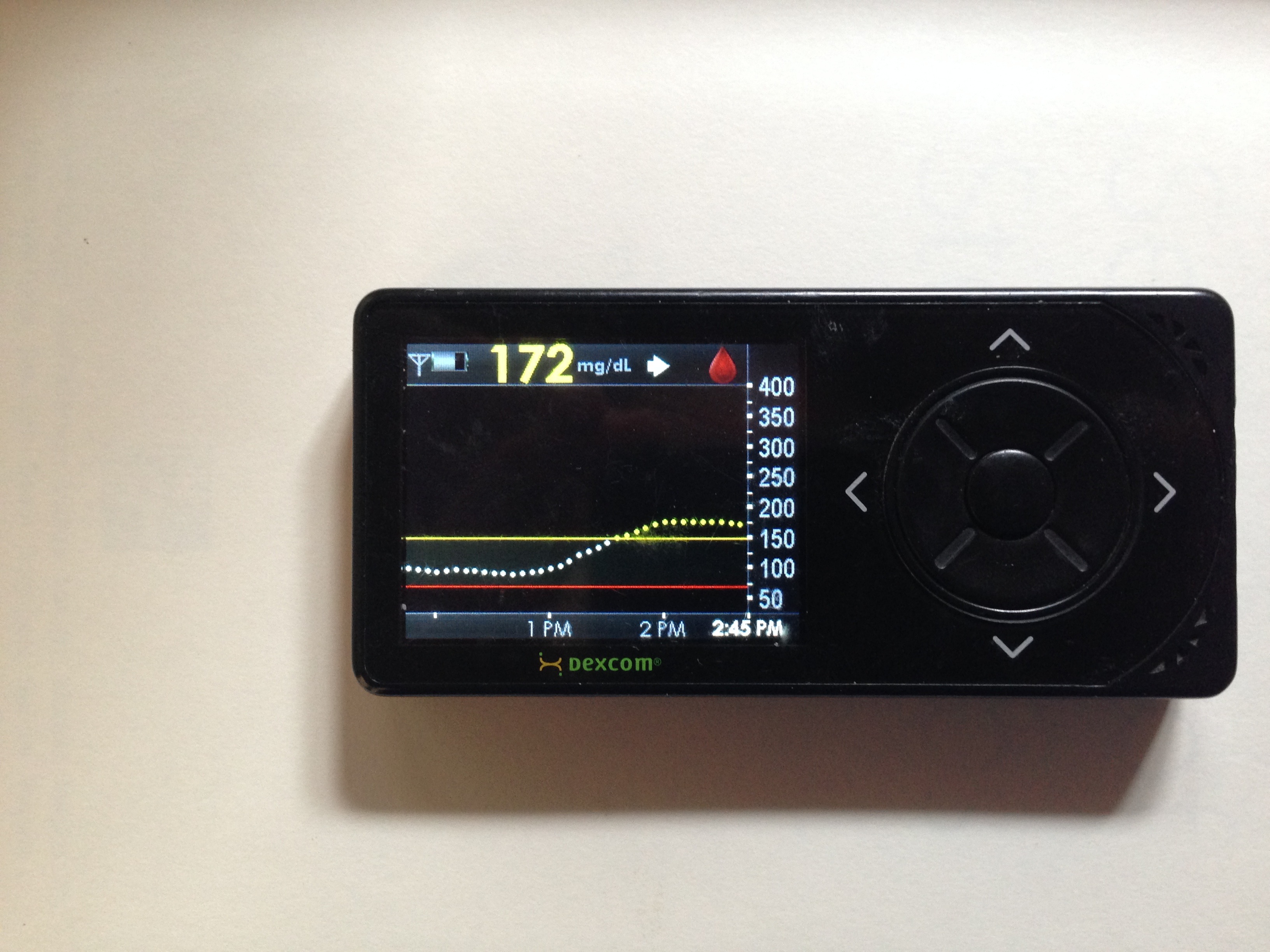Beating Challenging Meals and Winter Weather – Simple Tips for Better Blood Sugars, Eating, and Health
By Adam Brown
 twitter summary: Tips for better BGs this year: test more/use CGM, watch fat, sneak in exercise, change your food environment, + don’t expect perfection!
twitter summary: Tips for better BGs this year: test more/use CGM, watch fat, sneak in exercise, change your food environment, + don’t expect perfection!
If you're like me, you enjoy many aspects of special occasions: time with family and friends, delicious food, and a great opportunity to reflect on the year.
However, holidays can also be stressful, particularly for people with diabetes: large buffet-style meals, “how-many-carbs-are-in-that” side dishes, unpredictable schedules, and colder weather (just to name a few!). This article shares 15 simple tips that I hope will help you better manage your blood glucose during this time of the year. This reflects my personal experience and research, meaning the results may not translate to all patients in all cases. I’ve lived with diabetes for 12 years, but am not a healthcare professional. It’s best to consult your healthcare provider before making any changes to your diet or medication regimen.
Test your blood sugar more often or wear CGM. This is particularly important during special occasions, when meals are abnormal and you may be off your normal routine. As we heard from our diaTribe advisory board on “What Every Person with Diabetes Should Know”– “Not knowing your blood sugar is like crossing a highway with your eyes closed” (Dr. Jane Seley) and “Real time knowledge of your glucose is the best teacher” (Dr. Nancy Bohannon).
-
“Test – Don’t guess!” At some point, many of us have probably said, “I feel fine – I really don’t need to test right now.” However, a 2012 study found that most people are downright awful at accurately guessing their current blood sugar level. Better to pull out your meter and know for sure than to take a guess and fly blind.
-
If you are an insulin user, testing two hours after a meal is a great way to ensure that you bolused appropriately.
-
Try real-time CGM, which gives you a glucose reading every five minutes along with a trend arrow. It has been truly transformational for my diabetes control. See our most recent review of Dexcom’s G4 Platinum. We’ll also be updating our 2011 review of Medtronic’s Enlite soon.

Keep in mind that high-fat meals can raise blood sugar and increase insulin requirements. In a fascinating 2013 study, diaTribe advisory board member Dr. Howard Wolpert and colleagues compared high-fat and low-fat dinners in seven people with type 1 diabetes. Patients underwent 18 hours of closed-loop, automated glucose control after each meal. The high-fat dinner required 40% more insulin vs. the low-fat dinner, and despite the higher dose, the high fat dinner also caused more hyperglycemia.
-
Watch your fat intake at large meals. This is easier said than done, as large amounts of fat can hide in unexpected places like sauces and creams. When eating out, I always ask for sauces on the side and try to order things for which I can very predictably dose insulin.
-
Try some light exercise after a high-fat meal to help counteract the insulin resistance.
-
If you wear an insulin pump and will be eating a high fat meal, you can try a dual-wave/combo/extended bolus, which will deliver the insulin bolus over an extended period of time and help counteract the steady rise in blood glucose. I often find that these are hard to get right, so instead, I typically increase my basal rate (e.g., 130%) for a few hours after eating a high fat meal.
Even a few minutes of exercise is beneficial! When things are really busy or conditions aren’t cooperating (e.g., two-feet of snow on the roads), it’s easy to abandon your exercise routine altogether. Don’t fall into that trap – I’ve found that even ten minutes or less of exercise can have a really positive impact on my mood, energy levels, and blood glucose.
-
Go for a walk. In diaTribe #51, I discussed how walking really can improve your blood glucose control.
-
Try this seven-minute workout, which made a splash in the media earlier this year. The 12 exercises are each performed for 30 seconds, with 10 seconds of transition time between each. The circuit can be repeated two to three times. I have found the 7-minute workout app to be really useful (Apple and Android).
-
Use smartphone apps that guide you through simple indoor workouts that don’t need any equipment. I’m a fan of the free Sworkit (Apple and Android) and Power 20 (Apple and Android) apps, though there are many others out there.
-
Try the highly time efficient Tabata protocol – 20 seconds on, 10 seconds resting, repeated eight times (four minutes total). Choose a single exercise or alternate between two exercises. Try jumping jacks, pushups, bodyweight squats, planks, lunges, or whatever you prefer (or buy a resistance band to expand your options). It’s pretty hard to use a watch, so I recommend downloading a free Tabata timer app for your smartphone.
 Change your food environment. Mindless Eating: Why We Eat More Than We Think is one of the best books I’ve ever read on food, behavior, and habits. Author Dr. Brian Wansink’s compelling research shows that environmental and visual cues strongly influence food intake (e.g., how empty the bowl looks). In a series of fascinating studies, Dr. Wansink has identified several best practices for altering your food environment to eat less and choose better options. Below are just a few of my favorites, and here’s a more complete list.
Change your food environment. Mindless Eating: Why We Eat More Than We Think is one of the best books I’ve ever read on food, behavior, and habits. Author Dr. Brian Wansink’s compelling research shows that environmental and visual cues strongly influence food intake (e.g., how empty the bowl looks). In a series of fascinating studies, Dr. Wansink has identified several best practices for altering your food environment to eat less and choose better options. Below are just a few of my favorites, and here’s a more complete list.
-
Use the ½ plate rule: fill half your plate with veggies or salad. I love this one, since it’s so actionable, easy to remember, and a definite health and diabetes win.
-
Don’t eat directly out of the package. I know that when I’m hungry (and especially when I’m hypoglycemic!), I often pour food directly into your hand. Despite the convenience, I consistently overeat when I fall prey to this approach. Research suggests it’s better to pour from a package into a separate serving dish, and then eat.
-
Add some distance by leaving serving dishes in the kitchen at meal times. The additional effort required to get more food adds a bit of a social and psychological barrier to getting seconds. I can definitely attest to this one – when I work from home at my kitchen table, I snack far more than if I work from the living room.
-
Use smaller plates (9.5 inches is optimal) and smaller bowls. In a study published a month ago, Dr. Wansink and colleagues found that diners at a buffet with large plates served themselves 52% more, ate 45% more, and wasted 135% more food than those with smaller plates. Moreover, education did not appear effective in reducing such biases. Similarly, a 2012 study found that diners served 77% more pasta when given a large-sized bowl.
-
Make healthier food options more visible or accessible. In a series of studies in school lunchrooms, Dr. Wansink and colleagues found that simply putting fruit in a nice bowl in a prime area of the lunch line increased fruit sales by a whopping 103%. Similarly, moving the salad bar to a more visible and accessible location – the center of the lunchroom – increased salad sales 200-300% in most schools. At home, that translates to having healthy options more visible (e.g., vegetables in the center of the kitchen table) and less healthy options more hidden (e.g., dessert in the cabinet).
Don’t expect perfection and keep a positive attitude. Even with all the knowledge and experience in the world, remember that you will still make mistakes – and that’s okay! I’m consistently amazed at how often I make mistakes with my own diabetes, even after 12 years of experience and access to a pump, a CGM, and our incredible diaTribe advisory board. Instead of scolding myself and dwelling over the value on the meter, I find it’s better to think of blood sugar values as merely information to help make a diabetes management decision – not judgments on my motivation or ability to control my diabetes.
Stay positive this winter, and please let me know if there are any tips I left out!
Editor’s Note: Adam is a patient with diabetes and not a healthcare provider. Please consult with your doctor before making any changes to your diet, insulin, or medication regimen.
Adam is the co-managing editor of diaTribe and Chief of Staff at Close Concerns. He is a graduate of the University of Pennsylvania and serves on the board of Insulindependence and the San Francisco branch of JDRF. He was diagnosed with type 1 diabetes at the age of 12 and has worn an insulin pump for the last 11 years and a CGM for the past three years. Most of Adam's writing for diaTribe focuses on diabetes technology, including blood glucose meters, CGMs, insulin pumps, and the artificial pancreas. Adam is passionate about exercise, nutrition, and wellness and spends his free time outdoors and staying active. He can be contacted at adam.brown@diatribe.org or @asbrown1 on twitter.







